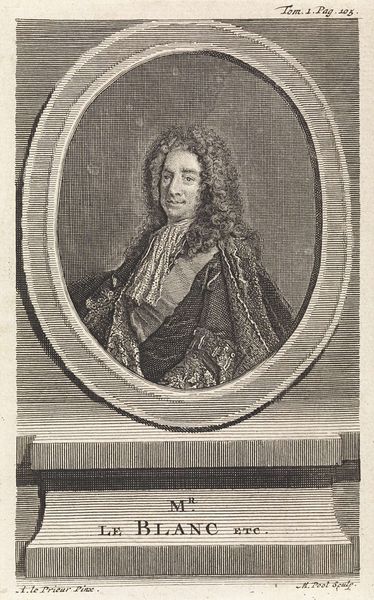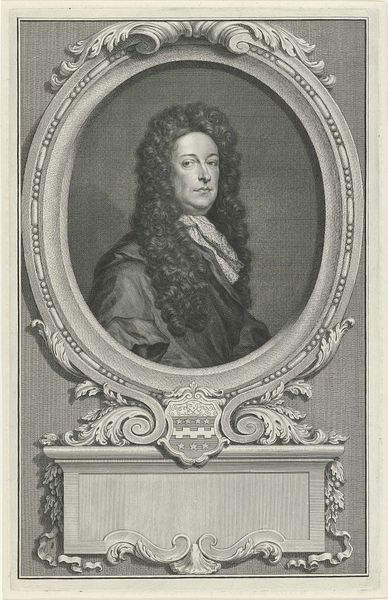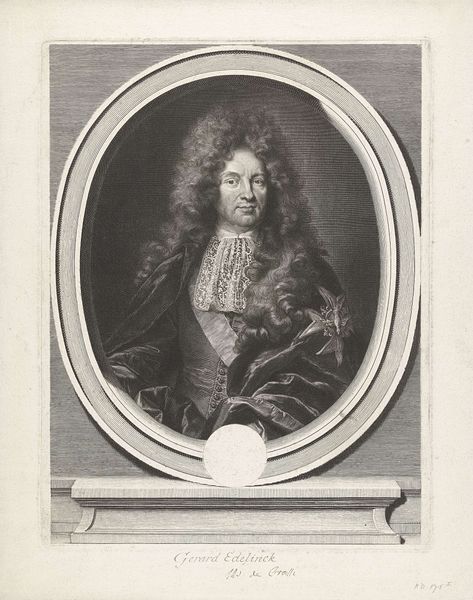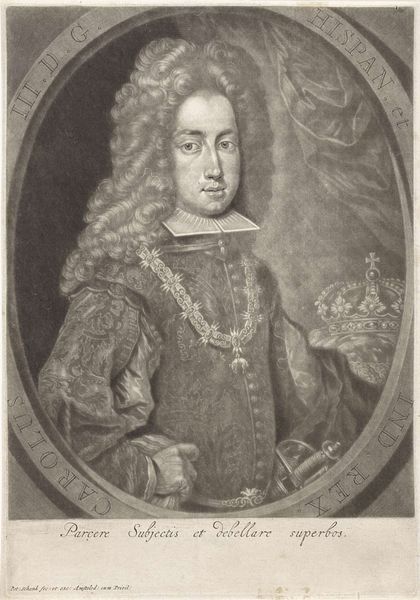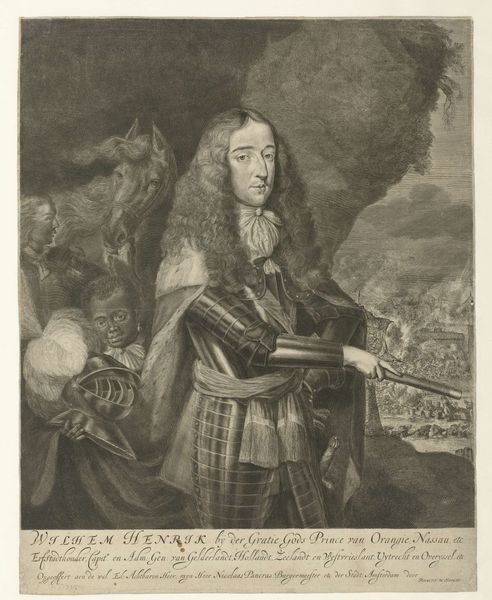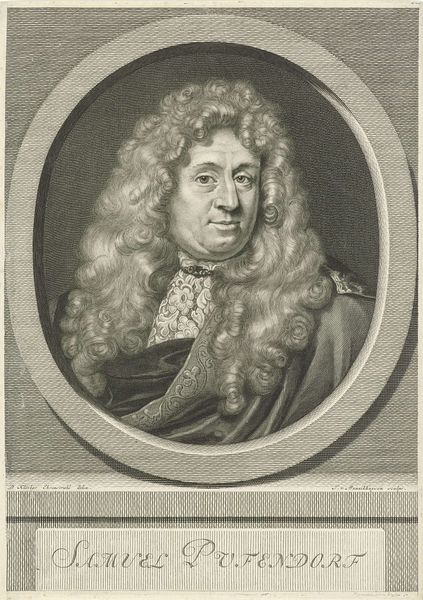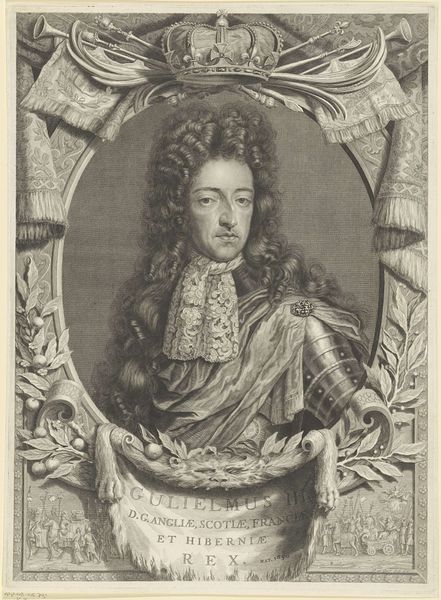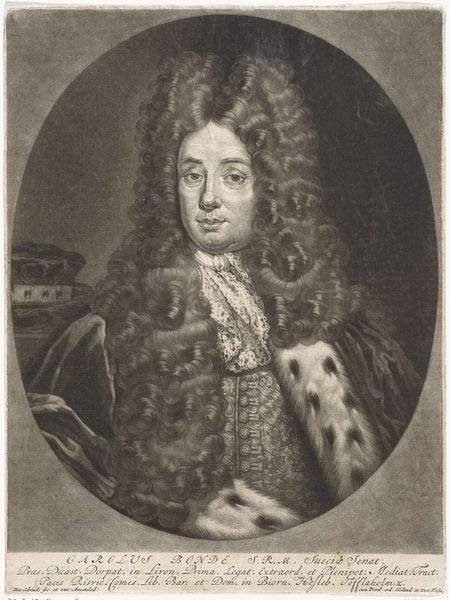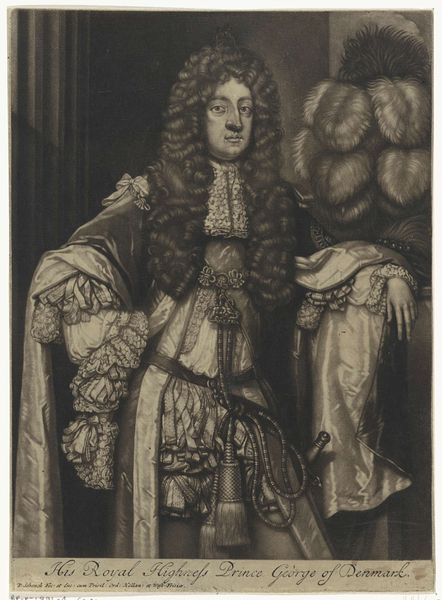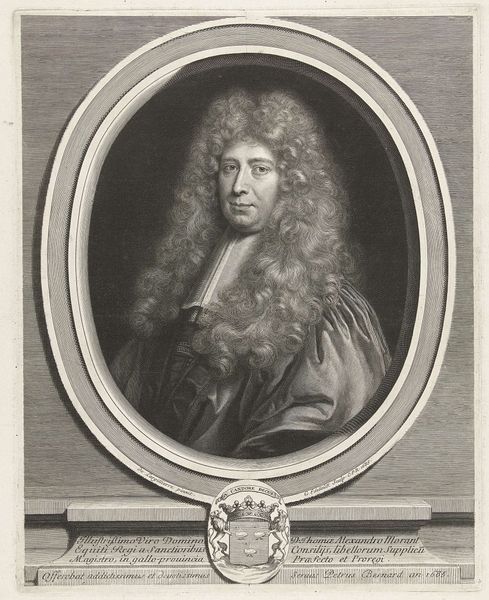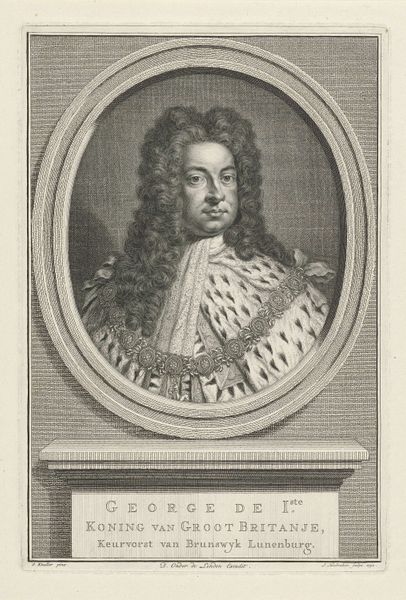
drawing
#
portrait
#
drawing
#
facial expression drawing
#
pencil sketch
#
charcoal drawing
#
form
#
charcoal art
#
portrait reference
#
pencil drawing
#
line
#
animal drawing portrait
#
portrait drawing
#
portrait art
#
fine art portrait
#
realism
Dimensions: height 192 mm, width 162 mm
Copyright: Rijks Museum: Open Domain
Curator: This portrait, entitled "Portret van Willem III, prins van Oranje," made sometime between 1850 and 1930 by an anonymous artist, depicts William III using what looks like charcoal and pencil. There’s a formal stiffness to it. How do you react to it? What does this work make you consider? Editor: The portrait indeed feels very proper, and distant, given the techniques used. I wonder about the labor and materials behind this piece. It seems that the artist invested a lot of work using what were probably readily available materials. How does the materiality influence your understanding? Curator: I’m struck by how the artist attempts to convey status using relatively humble materials. Think about the social context: A portrait of royalty, typically rendered in oil paint, is here made with charcoal and pencil. What statement might the artist be making about the accessibility of power or its representation? Editor: Interesting! So, by choosing drawing over painting, does it blur the lines between fine art and craft, or does it elevate the medium of drawing itself? Does this affect the perceived value, both monetarily and culturally? Curator: Precisely! It compels us to question those very hierarchies. Consider also the labor involved: a detailed drawing requires immense time and skill. Is the artist commenting on the "work" of representation itself? Perhaps even critiquing the value placed on certain materials versus others? Editor: That makes me think about how we consume images of power today. Even now we attribute value to a painting over a simple charcoal portrait. Is there a form of ingrained social bias we unconsciously harbor? Curator: Precisely! We are perhaps consuming a romanticized version of power by its representation using what we understand to be the 'right' materials. What have you gathered from this portrait then? Editor: I now see how seemingly simple choices about material and process can dramatically alter a work's message and invite a critical assessment of power structures. Thank you. Curator: Likewise, it’s always enriching to re-examine assumptions about value and labor.
Comments
No comments
Be the first to comment and join the conversation on the ultimate creative platform.
